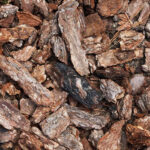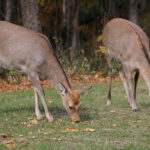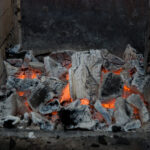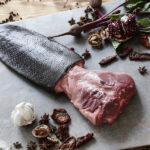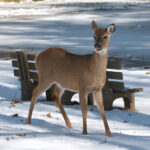Aside from being fun and useful, wood stoves can be pretty tricky in terms of technique, cleaning, and methods. For instance, most stoves don’t come with a tell-all guide of what to do and what not to do.
With this in mind, is it okay to burn bark in a wood stove?
Without further ado, let’s look at the answer to this common question!
Table of Contents
- Tips for Burning Bark in a Wood Stove
- Use Dry Bark Only In Your Wood Stove
- Should You Remove Bark From Firewood?
Tips for Burning Bark in a Wood Stove
It’s perfectly fine to burn bark in a wood stove as long as it’s dry before you light it.
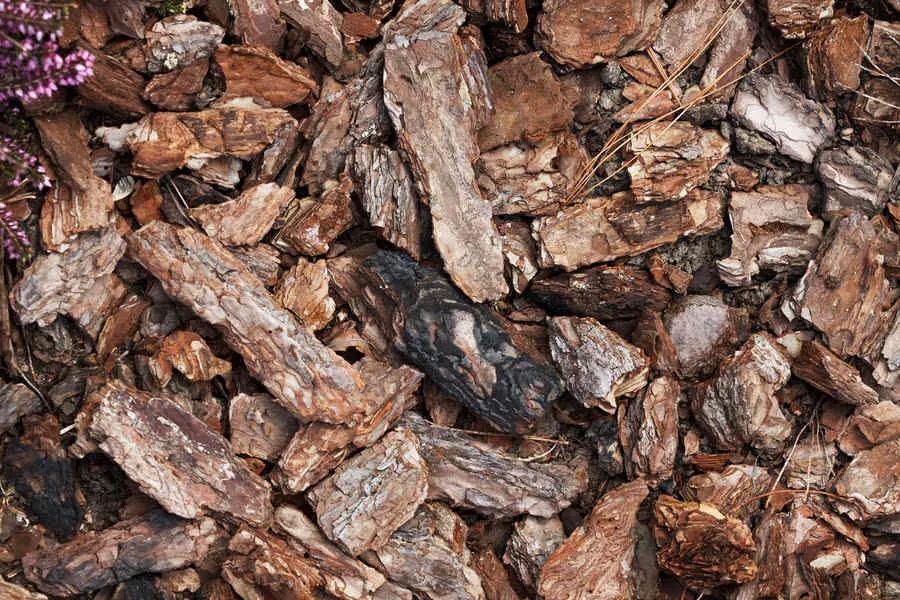
However, burning wet bark, or wet wood in general, produces a lot of smoke, which can build up in your flue as chimney creosote.
Here are a few things to remember about burning bark in a wood stove:
- Gather dry, seasoned wood, which is easier to ignite and will burn more efficiently in your wood stove.
- Use a fire starter or kindling to ignite the bark. This can be crumpled newspaper, dry leaves, or small twigs.
- Place the bark in the stove, leaving enough space for air to circulate, so it burns the bark more efficiently.
- Once the bark is burning, add larger pieces of wood to the stove, arranging them in a way that allows for good airflow.
- Adjust the stove’s damper to control the air flowing into the fire. A higher damper setting allows more air to enter the fire.
- Monitor the fire closely and add more wood as needed to maintain a consistent burn.
Use Dry Bark Only In Your Wood Stove
Dry bark produces more heat than wet bark, so you need to burn less to heat your home. However, it’s still important to use caution when burning bark because it can pop and crackle as it burns.
These sounds can be romantic or annoying, depending on their frequency and your preferences.
The popping and crackling sounds are caused by the expansion and contraction of the wood fibers as they are heated and cooled.
When the wood is heated, the fibers expand and stretch, causing them to break or snap.
As the wood cools, the fibers contract and shrink, which can also cause them to snap or break.
The combination of expanding and contracting fibers and the breaking or snapping of these fibers can create characteristic popping and crackling sounds.
In the end, using bark is somewhat like using firelighters in a wood stove. They may burn faster and stronger, however in some cases they may just not be cost or time-effective.
Why You Shouldn’t Burn Wet Bark
In addition to creosote build-up, burning wet bark in a wood stove creates a few other problems, such as the following:
- Slower, less efficient burning
- Corrosion of the stove
- Excess noise from the stove as it burns
Wet bark can cause the wood to burn inefficiently and produce lots of smoke. You’ll get less heat more slowly, so you need to burn more of it to heat your home, which can be costly.
Another reason not to burn wet bark in a wood stove is that it can cause damage to the stove itself.
The moisture in the bark can corrode metal components of the stove, such as the firebox and the flue, which reduces its efficiency and lifespan.
Even though using wet bark may produce ashes, most fuel sources will also create them. Be sure you know how to properly dispose of wood ashes, even if you plan on using a cleaner fuel source!
What Is Chimney Creosote?
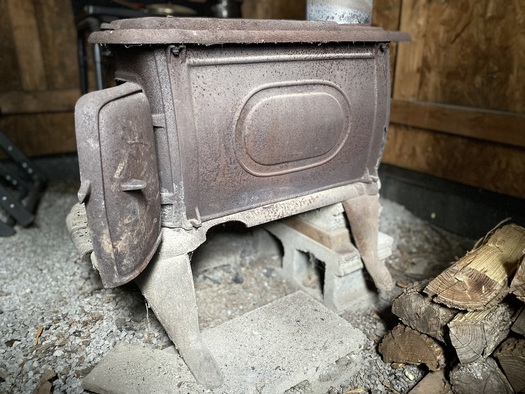
Chimney creosote is a tar-like substance that forms when wood smoke condenses inside a chimney. It’s a byproduct of the incomplete combustion of wood and other materials and can be highly flammable, creating a fire hazard if left to build up over time.
You’ll want to clean your chimney flues twice yearly, but if you’re going to burn wet bark, you might need to clean them weekly.
You can remove small amounts of creosote using a chimney brush and a creosote remover product. However, for larger amounts of creosote or difficult-to-reach areas, it’s best to call a professional chimney sweep for assistance.
Should You Remove Bark From Firewood?
You should remove bark from firewood, as it dries the wood faster than if it still had bark on it. It also keeps bugs and other infestations from working their way into the wood. Wood can also take longer to burn if it has its bark on it still.
The disadvantage of removing bark from your firewood is that you’re removing the automatic kindling that your wood has. Bark starts a fire faster, and it burns hotter than firewood, provided that it’s dry before you start your fire, that is.
Some people find that using bark can create more dust. If you are experiencing this, you should read about some common ways to reduce wood stove dust.
How To Remove Bark From Firewood
If you want to remove bark from your firewood, you’ll need a sharp knife and a stable place to stand the wood while removing it.
Here are the steps:
- Remove all the loose bark first.
- Place the wood squarely upright and firmly hold it in place.
- Find a gap between the bark and the wood, and place the tip of your knife in that section.
- Once your knife is firmly between the wood and the bark, twist your knife. The bark should come away from the wood, either in pieces or one large piece.
You can then burn the bark in your stove as normal.

